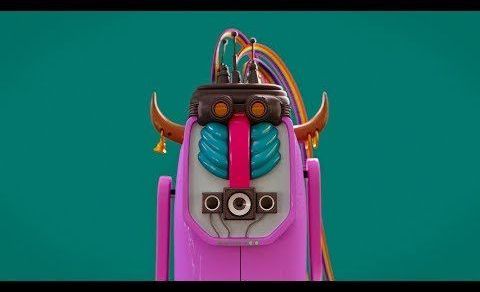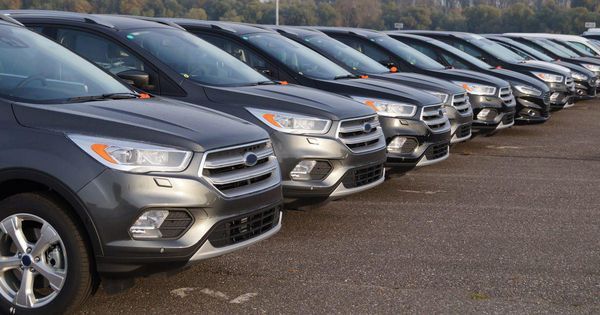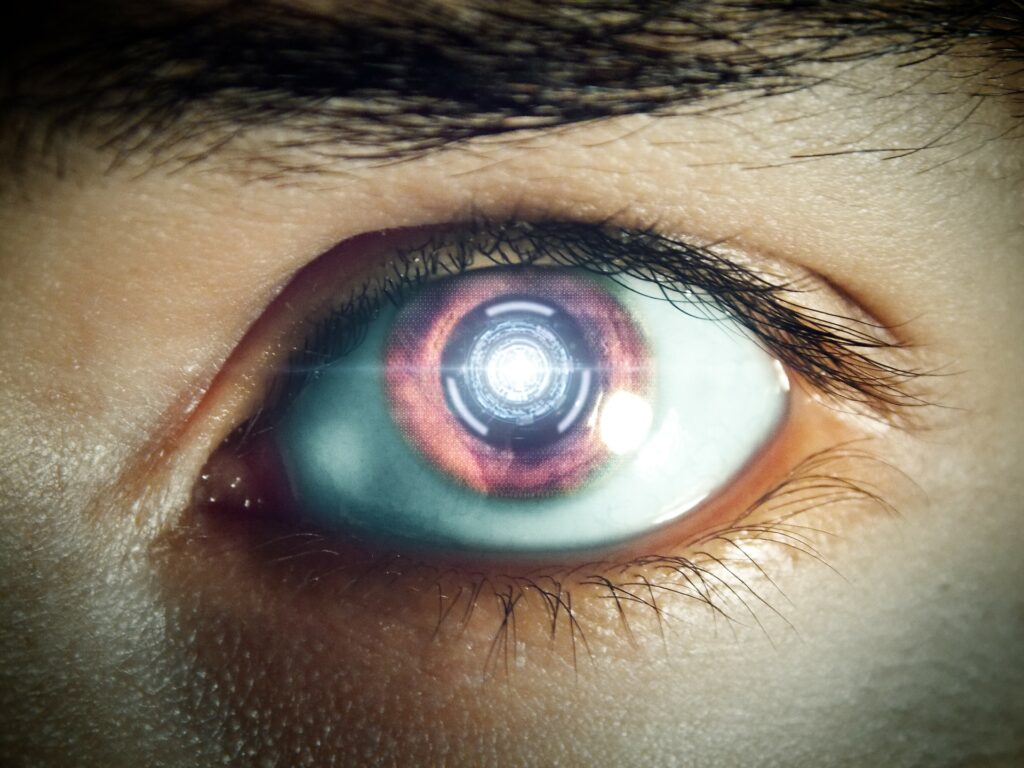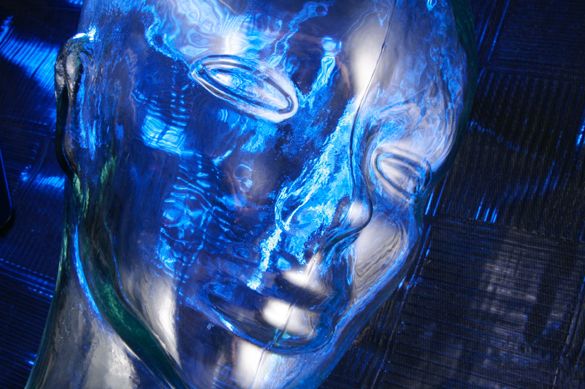70 votes and so far on Reddit.



The Houston Astros’ José Altuve steps up to the plate on a 3–2 count, studies the pitcher and the situation, gets the go-ahead from third base, tracks the ball’s release, swings … and gets a single up the middle. Just another trip to the plate for the three-time American League batting champion.
Could a robot get a hit in the same situation? Not likely.
Altuve has honed natural reflexes, years of experience, knowledge of the pitcher’s tendencies, and an understanding of the trajectories of various pitches. What he sees, hears, and feels seamlessly combines with his brain and muscle memory to time the swing that produces the hit. The robot, on the other hand, needs to use a linkage system to slowly coordinate data from its sensors with its motor capabilities. And it can’t remember a thing. Strike three!

The Vatican is hosting a 2-day conference on the impact of robotics and AI on humanity.
A 2-day conference focusing on the impact of robotics and artificial intelligence on humanity, that began in the Vatican on Thursday, is being organized by the Pontifical Academy of Social Sciences and the Pontifical Academy of Sciences.
By Robin Gomes
“Robotics, artificial intelligence (AI) and humanity: science, ethics, and polic y”, is the theme of a two-day international conference that kicked off in the Vatican on Thursday.

Ford Motor Company, ones of America’s oldest companies, uses artificial intelligence and machine learning in many ways from the supply chain to production to used car sales to self-driving vehicles. The company prioritizes technology, and this focus is one reason it’s leading the path to the future.

From Watson to Sophia, who are the artificially intelligent robot personas of today, and what can they tell us about our future?
Siri. Alexa. Cortana. These familiar names are the modern-day Girl Fridays making everyone’s life easier. These virtual assistants powered by artificial intelligence (AI) bring to life the digital tools of the information age. One of the subtle strategies designers use to make it easier for us to integrate AI into our lives is “anthropomorphism” - the attribution of human-like traits to non-human objects. However, the rise of AI with distinct personalities, voices, and physical forms is not as benign as it might seem. As futurists who are interested in the impacts of technology on society, we wonder what role human-like technologies play in achieving human-centred futures.
For example, do anthropomorphized machines enable a future wherein humanity can thrive? Or, do human-like AIs foreshadow a darker prognosis, particularly in relation to gender roles and work? This article looks at a continuum of human-like personas that give a face to AI technology. We ask: what does it mean for our collective future that technology is increasingly human-like and gendered? And, what does it tell us about our capacity to create a very human future?
The Women of AI
One of the most important observations we want to convey is that the typical consumer-facing AI persona is highly feminine and feminized. There are several robots and AI that take a female form. The examples below show the sheer breadth of applications where a feminine persona and voice are deliberately used to help us feel comfortable with increasingly invasive technology:
The Men of AI
What about the male personas? Probably the most well-known AI is Watson, the IBM machine that’s matched its immense wits against human opponents at chess and the trivia gameshow Jeopardy. Watson has also been used in cancer diagnosis and has a regular role in many more industries, including transportation, financial services, and education. When it comes to the masculine, it seems both brain and brawn are required. In many cases, male robots do the literal heavy lifting. Here are some examples of the jobs male-personified AIs do.
These examples raise the question of how much does technology shape reality? The personal computer and the mobile phone, for instance, have had immeasurable impacts across society and changed everything from work and healthcare to politics and education. Think about all the things that didn’t exist before the rise of the iPhone: texting and driving, selfies, online dating, Uber and Twitter, these are just some of the new normal. The way we work, live, and play have all been transformed by the rise of the information age. Hence, as we scan the next horizon, there is a strong sense that AI will form the basis of the near-future evolution of society.
Overall, we find it interesting to ponder the human-like manifestations among AI companions. A close look at the people of AI raises many questions: What is the role of human intelligence in an AI world? What will the relationship between robots and people be like in the workplace and in the home? How might humanity be re-defined as more AI computers gain citizenship, emotional intelligence, and possibly even legal rights? How can we avoid reinforcing unhealthy gender stereotypes through technology? We don’t expect to get at the answers. Rather, we use these questions to start meaningful conversations about how to construct a very human future.
About the Authors
The authors are futurists with Fast Future — a professional foresight firm specializing in delivering keynote speeches, executive education, research, and consulting on the emerging future and the impacts of change for global clients. Fast Future publishes books from leading future thinkers around the world, exploring how developments such as AI, robotics, exponential technologies, and disruptive thinking could impact individuals, societies, businesses, and governments and create the trillion-dollar sectors of the future. Fast Future has a particular focus on ensuring these advances are harnessed to unleash individual potential and enable a very human future. See: www.fastfuture.com
Rohit Talwar is a global futurist, award-winning keynote speaker, author, and the CEO of Fast Future. His prime focus is on helping clients understand and shape the emerging future by putting people at the center of the agenda. Rohit is the co-author of Designing Your Future, lead editor and a contributing author for The Future of Business, and editor of Technology vs. Humanity. He is a co-editor and contributor for the recently published Beyond Genuine Stupidity – Ensuring AI Serves Humanity and The Future Reinvented – Reimagining Life, Society, and Business, and two forthcoming books — Unleashing Human Potential – The Future of AI in Business, and 50:50 – Scenarios for the Next 50 Years.
Steve Wells is an experienced strategist, keynote speaker, futures analyst, partnership working practitioner, and the COO of Fast Future. He has a particular interest in helping clients anticipate and respond to the disruptive bursts of technological possibility that are shaping the emerging future. Steve is a contributor to the recently published Beyond Genuine Stupidity – Ensuring AI Serves Humanity and The Future Reinvented – Reimagining Life, Society, and Business, co-editor of The Future of Business, and Technology vs. Humanity. He is a co-editor and contributor to two forthcoming books on Unleashing Human Potential – The Future of AI in Business, and 50:50 – Scenarios for the Next 50 Years.
Alexandra Whittington is a futurist, writer, foresight director of Fast Future, and a faculty member on the Futures program at the University of Houston. She has a particular expertise in future visioning and scenario planning. Alexandra is a contributor to The Future of Business, the recently published Beyond Genuine Stupidity – Ensuring AI Serves Humanity and The Future Reinvented – Reimagining Life, Society, and Business. She is also a co-editor and contributor for forthcoming books on Unleashing Human Potential – The Future of AI in Business, and 50:50 – Scenarios for the Next 50 Years.
Helena Calle is a researcher at Fast Future. She is a recent graduate from the MSc. program in Educational Neuroscience at Birkbeck, University of London, and has eight years of international experience as a teacher, teacher trainer, pedagogic coordinator, and education consultant. Helena coordinates Fast Futures’ growing research on the future of learning.


What happens when a man is merged with a computer or a robot? This is the question that Professor Kevin Warwick and his team at the department of Cybernetics, University of Reading in the UK have been trying to answer for a number of years.
There are many ways to look at this problem. There is the longer term prospect of freeing the mind from the limitations of the brain by uploading it in digital form, potentially onto a computer and/or robotic substrate (see the h+ interview with Dr. Bruce Katz, Will We Eventually Upload Our Minds?). There is also a shorter term prospect at a much more limited scale — a robot controlled by human brain cells could soon be wandering around Professor Warwick’s UK labs.

An ever-increasing number of research groups are developing tiny robots, capable of performing targeted drug-delivery inside the body. One of the latest such devices incorporates a flapping whale-flukes-like tail, along with wings that fold up or down as needed.

Decades after Isaac Asimov first wrote his laws for robots, their ever-expanding role in our lives requires a radical new set of rules, legal and AI expert Frank Pasquale warned on Thursday.
The world has changed since sci-fi author Asimov in 1942 wrote his three rules for robots, including that they should never harm humans, and today’s omnipresent computers and algorithms demand up-to-date measures.
According to Pasquale, author of “The Black Box Society: The Secret Algorithms Behind Money and Information”, four new legally-inspired rules should be applied to robots and AI in our daily lives.

Air pollution is responsible for millions of deaths every year, worldwide. According to a State of Global Air report, air pollution is the fifth greatest global mortality risk.
“Air pollution is the fifth highest cause of death among all health risks, ranking just below smoking; each year, more people die from air pollution related disease than from road traffic injuries or malaria.”
No wonder, then, that when Google.org issued an open call to organizations around the world to submit ideas for how they could use AI for societal challenges, Google chose one of the 20 winning organizations as one that was out to address pollution.